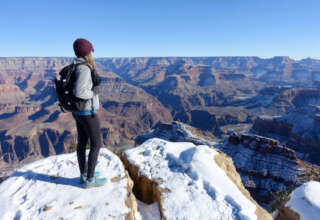
If you’re an avid hiker, you’ve likely heard of Norway’s Lyngen Alps, a mountain range located in the Troms county of Northern Norway. This area is well-known for its stunning scenery, challenging hiking trails, and opportunities for winter sports like skiing and snowboarding. But what about hiking in the Lyngen Alps in March? Is it worth the adventure? In this article, we’ll explore the pros and cons of March hiking in the Lyngen Alps.
Pros of March Hiking in the Lyngen Alps
- Snow-Covered Landscapes: One of the most significant advantages of hiking in the Lyngen Alps in March is the stunning snow-covered landscapes. The mountains and valleys are transformed into a winter wonderland, creating a magical and otherworldly atmosphere. You’ll have the opportunity to see frozen lakes, snowdrifts, and snow-capped peaks.
- Fewer Crowds: March is considered the shoulder season in the Lyngen Alps, which means there are fewer tourists and hikers in the area. This translates to quieter trails, more solitude, and a chance to connect with nature on a deeper level. You may also find that accommodations and tours are more affordable during this time.
- Northern Lights: Another reason to consider hiking in the Lyngen Alps in March is the possibility of seeing the Northern Lights. The aurora borealis is a natural phenomenon that occurs in the polar regions and is caused by charged particles from the sun colliding with the Earth’s atmosphere. The chances of seeing the Northern Lights are higher in March than during the summer months, making it an ideal time to visit.
Cons of March Hiking in the Lyngen Alps
- Weather: The weather in the Lyngen Alps in March can be unpredictable and change quickly. You may experience heavy snowfall, freezing temperatures, and high winds, which can make hiking challenging and potentially dangerous. It’s crucial to check the weather forecast and trail conditions before heading out and to be prepared with proper gear.
- Limited Trail Access: Due to the heavy snowfall and winter conditions, some hiking trails may be inaccessible during March. This means you may have fewer options when it comes to choosing your route, and you may need to adjust your plans based on the conditions.
- Shorter Days: In March, the days are shorter in the Lyngen Alps, which means you’ll have less daylight for hiking. You’ll need to plan your route accordingly and be prepared to hike in the dark or with limited visibility.
Conclusion
So, is March hiking in the Lyngen Alps worth the adventure? It depends on your preferences and goals. If you’re looking for a quieter, more affordable experience with stunning winter landscapes and a chance to see the Northern Lights, then March may be an ideal time to visit. However, if you’re not comfortable with potentially challenging weather conditions or limited trail access, you may want to consider visiting during the summer months. Ultimately, the Lyngen Alps offer a unique and unforgettable hiking experience, no matter the time of year.















